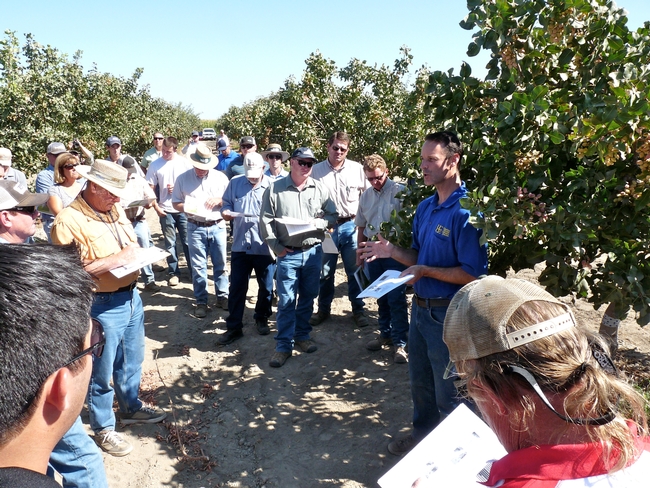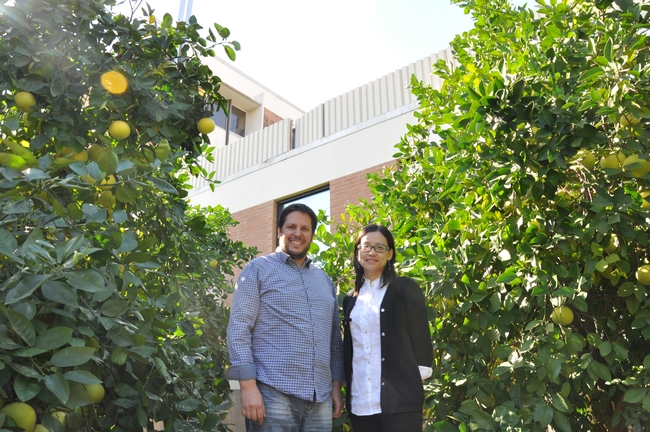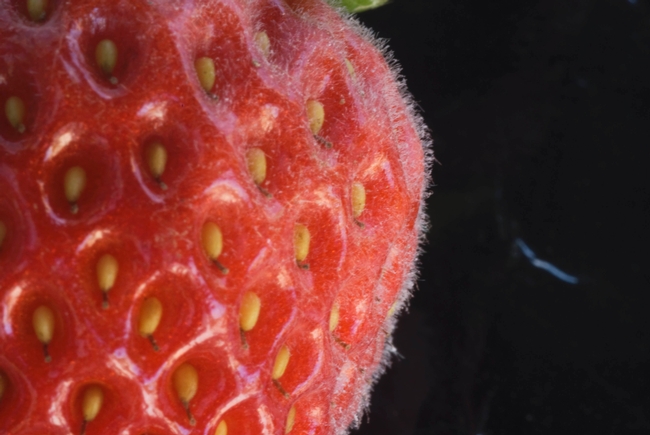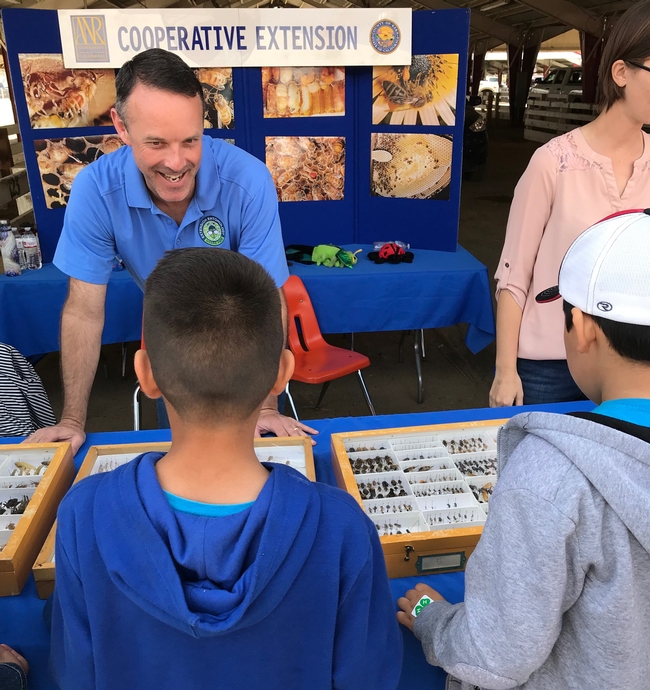
Posts Tagged: pest management
USDA approves release of weevil to control yellow starthistle
The USDA has announced it will allow the release of a weevil (Ceratapion basicorne) in the United States to help control yellow starthistle, an invasive weed found in 40 of the lower 48 states, reported Capital Public Radio. The weevils will initially be released in California.
Ceratapion basicorne is native to Eurasia, the same area where yellow starthistle originated. Yellow starthistle is thought to have been introduced into California from Chile during the Gold Rush. The weed readily took hold in California valleys and foothills, thriving in areas where the soil has been disturbed by animals grazing, road construction and wildland firebreaks. Today, yellow starthistle is a very common sight in vacant lots and fields, along roadsides and trails, in pastures and ranch lands, and in parks, open-space preserves and natural areas.
Capable of growing six feet tall and bearing flowers surrounded by inch-long spines, yellow starthistle reduces land value, prevents access to recreational areas, consumes groundwater and poisons horses.
Brad Hanson, UC Cooperative Extension weed specialist at UC Davis, says yellow starthistle thrives in part because of its prickly spines.
"It's not very palatable to any livestock, especially once it's started to flower . . . . Often times, the other grasses and more palatable plants are grazed and the starthistle persists and is sort of the only thing left,” he said.
Hanson says yellow starthistle can be managed on a small scale with chemicals, but that method just doesn't work with the scale of infestation in the state.
“It's difficult to control economically on the millions and millions of acres of rangelands or non agricultural lands that are sort of minimally managed,” he said.
The USDA's environmental assessment of the weevil found no significant impact of its release, besides helping to control yellow starthistle infestations.
UCCE scientists are part of a new work group to find alternatives to chlorpyrifos
The California Department of Pesticide Regulation has formed a work group to find alternatives to the pesticide chlorpyrifos that will help farmers manage insect pests when a state ban on the chemical goes into effect, reported Kerry Klein on Valley Public Radio.
Klein interviewed David Haviland, UC Cooperative Extension entomology advisor and a member of the work group.
“This is an important topic,” Haviland said. “Chlorpyrifos has had a lot of benefits to agriculture for many years. At the same time, it does have some negative issues associated with it that were the reason that the product has been proposed to be discontinued.”
Chlorpyrifos is a common insecticide used under the trade names Lorsban, Lock-on and generic formulations to control ants, stink bugs, aphids, whiteflies and other pests. UC IPM coordinated a comprehensive report on chlorpyrifos in 2014, commissioned by DPR, outlining critical uses of the pesticide in alfalfa, almonds, citrus and cotton. The report details the insecticide's use patterns as compared to other pest control tactics, such as resistant varieties, mating disruption, field sanitation and other insecticides.
The new work group will develop short-term and five-year action plans to identify safer, more sustainable pest management tools, practices, and alternatives in a wide array of crops. They will seek solutions that are safe for workers, communities and the environment, able to adequately control targeted pests, and cost effective. In addition, the work group will consider the issues of efficacy, soil health and climate change.
The solutions might include combinations of other pesticides to help protect the dozens of crops on which chlorpyrifos is used. Haviland says the group will prioritize the most urgent needs first: “Who's really going to take a hit from the ban, and from there, what is the best way to go forward,” he said.
Along with Haviland, UC Agriculture and Natural Resources is represented on the new work group by UC IPM advisor emeritus Pete Goodell and UCCE field crops advisor Michael Rethwisch.
Screen installed over the 'parent navel' in Riverside to protect it from disease
City of Riverside staff draped a synthetic screen on a steel frame to encompass the 'parent navel' orange tree at the corner of Arlington and Magnolia avenues in Riverside to protect it from Asian citrus psyllids that spread huanglongbing disease, reported Ryan Hagen in the Riverside Press-Enterprise. Huanglongbing (HLB) is a devastating bacterial disease of citrus that is starting to spread rapidly in urban areas of Southern California.
The newly covered tree is valued for its status as an early ancestor of all Washington navel orange trees.
UC Cooperative Extension specialist Georgios Vidalakis, the UC Presidential Researcher for Sustainable Citrus Clonal Protection, was on site when the tree was enclosed within the new cover.
“This one will buy us a few years so the city can design a more elegant structure like you see in arboretums — maybe a wood hexagonal pavilion that will be aesthetically more pleasant,” Vidalakis said. “Unless in the next few years we find a solution.”
UC Agriculture and Natural Resources specialists and advisors are working with the citrus industry, USDA and CDFA to control ACP populations and keep HLB contained while researchers search for a cure for the disease.
Sulfur could be related to cases of asthma near farming communities
Sulfur is a natural element that can be used in strawberries, grapes and other crops to protect fruit from powdery mildew, a fungal disease that results in damaged fruit, reported Eilis O'Neil on Reveal, a podcast produced by the Center for Investigative Reporting and PRX.
Because sulfur is natural, it can be used by organic and conventional farmers alike. And it is inexpensive.
"Farmers use tons of it," O'Neill said. "It's the most used pesticide in California and it's widely used in the rest of the country."
However, it is an irritant. People who accidentally breath it in can have irrigated eyes, sore throats or difficulty breathing.
O'Neil interviewed Lisa Blecker, a pesticide safety coordinator with the UC Statewide Integrated Pest Management Program (UC IPM). UC IPM is part of UC Agriculture and Natural Resources.
"There's something about sulfur that makes people (react more strongly) every time that they're exposed to sulfur ... kind of like if you are allergic to a bee sting. So every subsequent time that you are stung, your body responds in a more severe way," Blecker said.
Brenda Eskenazi, a public health researcher at UC Berkeley, also appeared on the podcast. She said she had seen case reports about an increase in asthma symptoms in children who live near fields where sulfur was sprayed. Eskenazi and her colleagues followed the health of more than 500 children in the Salinas Valley from pre-birth to 7 years old.
"Kids that lived closer to where sulfur was applied had more asthma problems and also poorer lung function," Eskenazi said.
Blecker said that sulfur must be closely regulated.
"Anything that we do to reduce the offsite movement of pesticides is good, (such as) monitoring wind speed and direction," Blecker said. "A lot of grape growers do night applications because they are trying to just minimize the exposure to people because there's more people out during the day. If you're spraying in a situation where grapes are only on one side of you, it's best to be spraying into the vineyard."
UCCE advisor teaches children to respect insects

"Every single insect plays a role, even if it's only purpose is to get eaten by something," Haviland said. "Everything is important."
Haviland spent the day at the Kern County Fairgrounds teaching students about insect life cycles and their role in the ecosystem. He said populations of grasshoppers, cockroaches and ants ramp up in April and could become pests in their homes. He recommends using Integrated Pest Management for control, which focuses on the least-toxic approach to preventing and treating insect infestations.
"In most cases in your yard, for example, you don't really need to do anything. There are good bugs. There are bad bugs. The good ones eat the bad ones, and you're done," he said.
If insects become pests, the UC IPM website spells out safe, effective solutions. Ants, for example, can be kept out of the house by sealing cracks and crevices that allow them inside, cleaning up grease and spills in the kitchen, and removing sweet food sources next to the house. If they get inside, a sponge and soapy water can clean them up. Insecticide sprays are often unnecessary.
Eight-year-old Carver Williams got the message. He told the 23ABC reporter, "If you ever approach a bug that you've never seen before in your life, just respect it."




